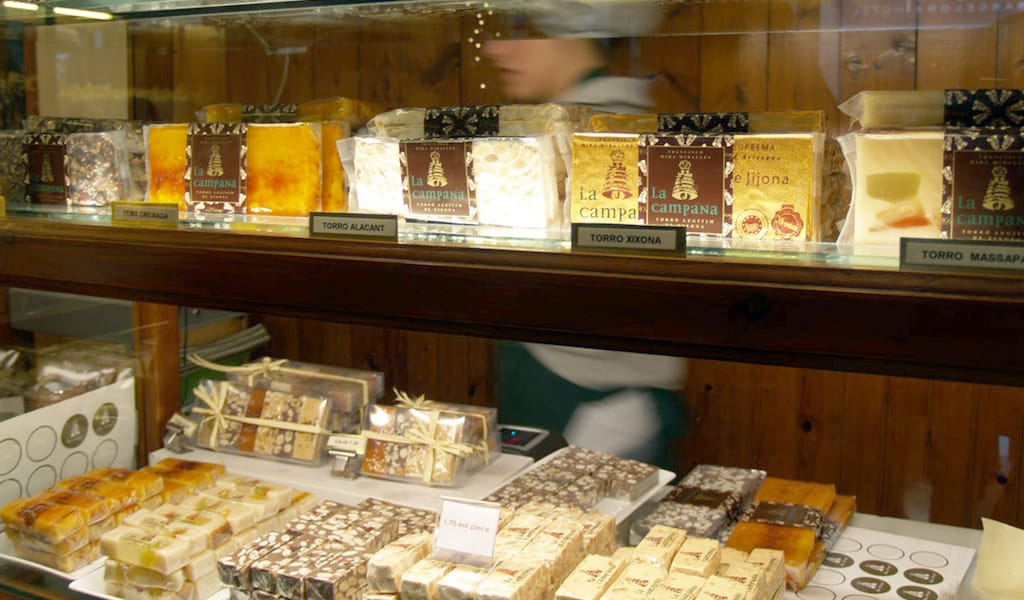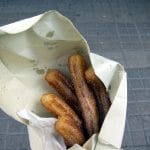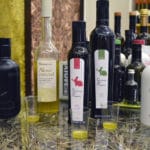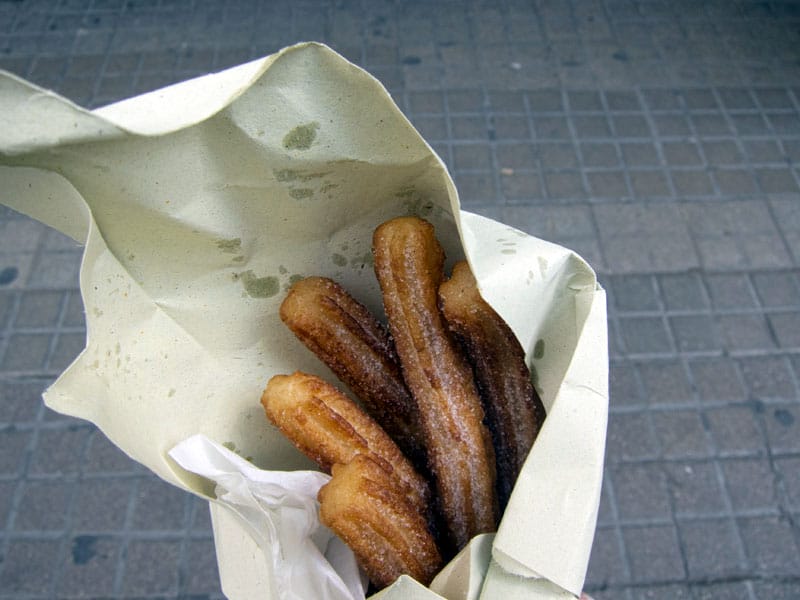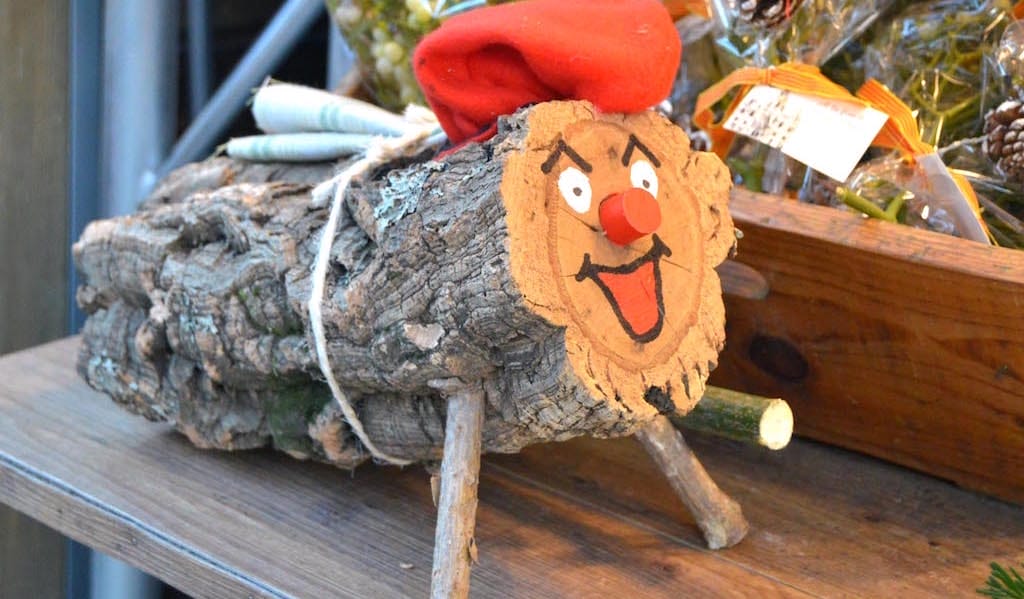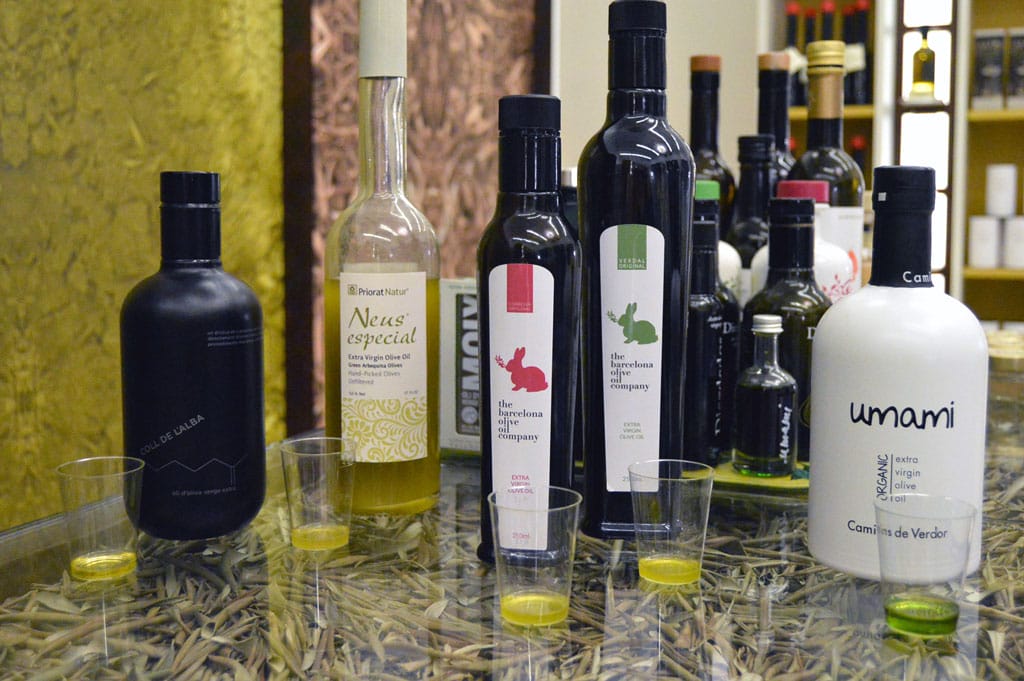Typically eaten at Christmastime in Spain, turrón (a type of nougat) originated centuries ago. Some historians believe it was a sweet paste with nuts eaten by athletes in ancient Rome, while others trace its origins to a more elaborate medieval Arab delicacy that combined various toasted nuts with spices and honey. First documented in Spanish by an Arab physician writing in 11th-century Andalusia, “turun” may have been introduced to the Iberian Peninsula by Arabs or Jews from North Africa during the period of al-Andalus. Either way, by the 16th century, the Spanish aristocracy was crazy about turrón, and its popularity eventually spread to all social classes and to other parts of Europe. Over time, this sweet with ancient culinary roots was further refined, becoming Spain’s most popular Christmas treat.
Traditionally produced in the region of Alicante, turrón comes in several varieties. Turrón de Alicante, or “hard turrón,” is made with whole almonds set in a honey-egg white mixture so brittle that it’s often broken with a kitchen mallet. Jijona, a small village in the province, is famous as the main producer of turrón in Spain; in the old days, every year during the months leading up to Christmas, the inhabitants of Jijona would traverse the country, selling turrones from their horse carts. Starting in about the 19th century, the Jijona artisans developed a new creation, a delicate “soft turrón.” This turrón de Jijona (or Xixona, the Catalan and Valencian name for the town), as it became known, is made with toasted almonds that are ground into a paste and combined with honey and egg white, the oil from the milled almonds lending the sweet a moist, chewy and homogenous texture completely different from that of “hard turrón.”
Nowadays, dozens of different types of turrones and nougats are to be found in Europe, mostly in Italy and Spain, and Barcelona is no exception.
Nowadays, dozens of different types of turrones and nougats are to be found in Europe, mostly in Italy and Spain, and Barcelona is no exception. At Christmastime, it is not uncommon to see lines of people at the city’s most popular maestros turroneros, waiting to buy the hard Alicante variety; the soft Jijona kind; turrón de yema tostada, Catalonia’s most typical nougat, made with egg yolk and a caramelized crust; contemporary adaptations made with chocolate truffle; and many other types.
Since 1775, the Vicens family has produced torró (as the sweet is known in Catalan) in Agramunt, a village in Lleida province, in the heart of Catalonia. This torró d’Agramunt is considered unique to Catalonia and has Protected Designation of Origin status. Vicens’s nougat, very similar to the Alicante hard turrón, comes as a round disc made with toasted hazelnuts, sugar, egg whites and honey, with thin wafers on the top and bottom. A very popular brand in Catalonia, Torrons Vicens has a number of shops in Barcelona, including in La Boquería market.
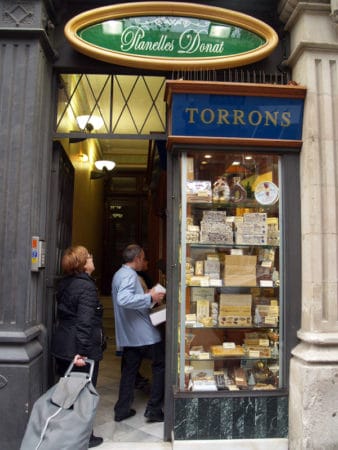 Over the years, an unusual tradition emerged in Barcelona, that of selling turrón in the entryways of residential buildings. On Carrer Cucurulla, in the entrances of Casa Colomina and Planelles Donat, two families have been selling turrón since the 19th century. Planelles Donat in particular has become a true Barcelona classic, offering some of the best nougat in town. The family has been selling from this location since 1850, except for a three-year period during the Spanish Civil War. Some turrón-makers are accused of committing the sin of making confections that are tasteless, dry and too sweet, but Planelles Donat’s shine as if touched by an angelic light: all of the company’s products have delicate textures and refined flavors.
Over the years, an unusual tradition emerged in Barcelona, that of selling turrón in the entryways of residential buildings. On Carrer Cucurulla, in the entrances of Casa Colomina and Planelles Donat, two families have been selling turrón since the 19th century. Planelles Donat in particular has become a true Barcelona classic, offering some of the best nougat in town. The family has been selling from this location since 1850, except for a three-year period during the Spanish Civil War. Some turrón-makers are accused of committing the sin of making confections that are tasteless, dry and too sweet, but Planelles Donat’s shine as if touched by an angelic light: all of the company’s products have delicate textures and refined flavors.
The house’s specialty is Jijona soft turrón, which here is a delicate beige paste with very tiny pieces of milled Marcona almonds. With its chewy, buttery texture and the right balance of sweetness, this turrón simply melts in the mouth, demanding another bite. The other typical variety sold at Planelles Donat is the even softer turrón de yema tostada. This variety is made by mixing crushed Marcona almonds with crystallized sugar and egg yolks, producing a very malleable paste that is similar to marzipan. Finally, just like in crema catalana (the Catalan version of crème brûlée), a layer of sugar is caramelized on the surface of the turrón, producing a crunchy, highly flavorful bite.
For those looking for a real local treat, we recommend La Campana (“The Bell”), a lovely little patisserie founded in 1850 by Francisco Mira Miralles, who came to Barcelona from Jijona village. La Campana uses top-quality products for their turrones, including Marcona almonds and a delicious rosemary honey (a type of monofloral honey produced in Spain). But, more than just the ingredients, what sets apart the nougat sold here are the intense flavors and textures, whether from the extra-crunchy caramelized sugar in the egg yolk nougat or the exceptionally smooth almond paste in the soft variety.
Subtle or dazzling, soft or hard, made with almonds or hazelnuts, turrones are now a staple at every Christmas table in Spain. Everyone has their favorite; maybe yours is waiting somewhere in Barcelona.
Editor’s note: We’re bringing turrón to your home – the popular treat is the sweet finish of our Barcelona Barrio Box, which you can order here. This feature on turrón was originally published on December 21, 2012.
Published on December 12, 2022







































